The horror film The Nun II, directed by Michael Chaves, was released in theaters a few weeks ago and held the #1 spot at the box office for several days. The sequel to the American saga The Conjuring chose the south of France, to tell the terrifying story of the nun Valak. The visual effects were created mainly by the French teams at MPC and BUF.
The MPC Paris teams worked on over 70 VFX shots over a period of 7 months. Here are the experiences shared by Laurent Creusot – MPC VFX Supervisor, Estelle Matranga – MPC VFX Producer, Bastien Brenot – CG Supervisor, Christophe ‘Tchook’ Courgeau – Environment Supervisor, Zoé Karadi – VFX Coordinator, Michael Moercant and Agathe Sayegh – Motion Graphic Artists.
Read the full interview on the magazine’s website here.

The Newspaper Kiosk Scene.
The work of the MPC teams on the newspaper kiosk scene began in pre-production with exchanges of artistic references, then focused on their visual implementation. Laurent Creusot adds, “For this film, the references naturally turned towards imagery from the 1950s, with the naivety of the advertisements of that time and highly intense religious images.”
“From the beginning, Michael Chaves had a clear idea of a visual choreography creating tension and suspense,” recalls Bastien Brenot, the CG supervisor. “The Nun would take shape in the form of moving photographs and magazine images. As the pages turned, they would combine to form new faces, and Valak would confront Irene for a final showdown.”
“This sequence required close collaboration between departments at MPC, with technical complexity at every level,” explains Laurent. The design of the assembly of faces on the magazine pages, the movement rhythm, and the evolution of these designs were managed by the motion design department. The result was a flattened view of the entire kiosk, with each magazine animated over the total duration of the sequence. “We had to recreate 83 magazines in 3D to have sufficient control to make artistic decisions at the level of a single page, sometimes even just one side of the page,” Bastien emphasizes.

“The biggest challenge was setting up a pipeline between different software and visual effects departments,” confides Michael Moercant, Motion Design Artist. “The motion design department was the first link in the production chain, and every adjustment we made had a significant influence on the subsequent steps. During production, we had to find a solution to limit the amount of calculated imagery without undermining the existing pipeline, and especially not restricting artistic modifications.”
“This scene was important from the start of the project, as it initially required a lot of visual research to get something as close as possible to what the director imagined,” says Agathe Sayegh – Motion Design Artist. “The biggest challenge was primarily in the logistics of production.” There were both the collages of faces, the movement through the kiosk, the emergence of the form of the nun, the rhythm, the number of pages, their movements, etc., but also the collaboration between the motion design department and the 3D department, which worked almost simultaneously with quite long production and rendering times. “Each team had technical constraints, a vision of the result, and had to wait for the other team to produce a sequence to be able to work, and vice versa. It was both a simultaneous hand-in-hand and relayed work,” concludes Agathe. Laurent specifies that “After the motion design department, this sequence went to the FX department, responsible for transforming these static images into pages turning naturally and experiencing the effect of the wind. It was a huge technical challenge.“
“We quickly opted for a procedural process and set up our first system with Houdini,” Bastien recalls. “We were fortunate to work with a particularly creative Houdini artist, Benjamin Saurine. He came up with the idea of an endless series of pages entering and exiting the magazine simulation. A bit like a barrel organ in a 4D space. Funny anecdote: from the first days of testing, we obtained very good results that were even included in the final version.”
“The FX department then exported data that allowed the lighting department to work on the textures of each page via the 3D software Maya, and then integrate the appropriate light for a realistic render,” Laurent continues, “all while scrupulously following the animation created from the beginning by the motion design department.”
Christophe ‘Tchook’ Courgeau simultaneously took care of the digital set extension of this sequence and specifies that “The sequence was initially shot on a street in Tarascon, France and later replicated in a studio with a blue screen background. We had to extract photogrammetry data from the filming location and clean it up in order to digitally recreate some surfaces that were missing details, such as the window bars for example.” He acknowledges that “living in the country where the film takes place was an advantage for his digital environment and set design team. It was easier to propose sets and atmospheres to the director because these are familiar places for us, and practically, we were able to take photos when needed.”
Bastien Brenot concludes: “The work of the assets, lighting, and compositing teams allowed us to achieve the level of extreme realism we needed for this scene. The recreation of the street, the kiosk, and the magazines was so precise that our entirely 3D-manufactured shots fit seamlessly into the edit with the real shots.”

Jump Scare Scenes, Essential to Horror Films.
The opening scene of The Nun II shows a priest on fire: “unexpected, but somehow fun to create,” for Bastien Brenot. He adds, “This scene is a combination of practical and CG elements, its success relied heavily on our compositing team, led by the talented Sébastien Podsiadlo and Arnaud Dodane.” The shots of an animatronic priest on fire were the basis of MPC’s work. They then recreated the entire scene, setting fire to a digital 3D double. “The idea was to add animation control and flame detail to the real images using our 3D fire simulations; our special effects artist had to match the real shape and speed of the fire, and he had to go through many iterations to generate flames with different visual characteristics to feed into the composition.”

The 1950s Set.
Christophe ‘Tchook’ Courgeau – Environment Supervisor: “My favorite sequence is undoubtedly the aerial view of the city of Aix-en-Provence. It’s an aerial shot where we discover the abbey where the story begins. We had a significant constraint: the church attached to the convent did not match the director’s vision, and the lighting during the shoot was not consistent with the rest of the sequence. So, it was a very complicated shot to imagine and set up.
The reconstruction of the set started with motion tracking that had to be perfect throughout the depth of the city. In parallel, we had conducted several concept tests to see how much it was possible to transform the overall lighting of the shoot into directional lighting that was supposed to evoke early morning light.
Once everyone agreed on the look of the shot… we 3D cut out EVERY HOUSE IN THE SHOT! And this… NEIGHBORHOOD BY NEIGHBORHOOD! It was a titanic job, and once this work was done, we could calculate light and shadow passes that were added in compositing.
To give some volume to the neighbourhoods, air out the composition, or replace missing elements, we also created 3D houses that were also added in compositing. In parallel, we reconstructed the tower, a part of the roof, and the entrance of the church. And finally, we digitally recreated a cobbled square with a fountain to the right of the church, with people moving around, as well as old shops and cars from the 1940s-50s.”

Anecdotes and Fond Memories.
Laurent Creusot – MPC VFX Supervisor: “Director Michael Chaves has a keen understanding of visual effects, so we were able to quickly establish an interesting and interactive dialogue because he grasped the challenges and imperatives inherent to our profession. It was very enjoyable working with him because he had a very precise vision of what he wanted to see on screen and what he wanted the audience to feel – and most importantly, he didn’t need to see the finalized effect to determine if the direction suited him or not. All the changes and improvements during the production process had one goal: to push the sequence to its best possible version.”
Estelle Matranga – MPC VFX Producer: “One morning, I was sitting at my desk watching a new sequence we had received. I was wearing headphones so as not to disturb others around me. I was really captivated by this scene. Just as the Nun slowly places her hand on a child’s shoulder in this scene as he lets out a demonic scream, a colleague came over, placed her hand on my shoulder, and made me jump out of my chair. Nothing like a little morning jump scare to get into the Nun’s atmosphere.”
Zoé Karadi – VFX Coordinator: “Every viewing of the Newspaper sequence made us jump. No matter how much we tried to count the number of frames before the sudden appearance of the Nun, there was always at least one person who would jump – even more when watching with sound!”
Agathe Sayegh: “What I liked most was working on a sequence as original and creative as the newspaper kiosk because it involved many challenges. I liked being able to collaborate with different team members, and each of them provided me with advice, opinions, support, and help. Working all together was very enjoyable for me, as well as helping each other in challenging moments, supporting in moments of doubt, and rejoicing at every satisfying result. The sequence of the kiosk was very long and often complicated, but we all gave 100%. That’s what I remember!”
Tchook: “The production of ‘The Nun II’ was a good memory; there were very exciting and technical shots to create. The exchanges with the director were very creative. It is very important for us to communicate with the people on set to help them tell their story in the best possible way and to offer them solutions for the creation of digital set extensions that align with the narrative. The reconstructions of the other 1950s city sets required the creation of dozens of advertising posters. We took the opportunity to slip in the names of the people working on the shots, and a cinema poster that has now been a running gag for 10 years. Congratulations again to the entire environment department team: Bastien, Tristan, Jim, Thomas, Clément, Jordan, Justine, Aimee, Céline, and Damien who participated in the creation of all these sets.”
///
Lucas Salton (on-set VFX Supervisor and VFX Supervisor) and Matthieu Piat (VFX Producer) – BUF
How did the project come to MPC Paris & BUF?
We were approached by the VFX Producer of the project, Sophie Leclerc (big shoutout to her !). The film crew was shooting in Aix-en-Provence and Martigues studios, looking for a French-based studio to handle both on-set shooting and post-production visual effects. Their idea was to split the workload among a minimal number of vendors, preferably on French soil.
What were the director’s approaches and expectations regarding visual effects?
Initially, the director, Michael (big shoutout to him too!), envisioned simple and classic effects, in line with the visual grammar of horror. He initially leaned towards as many practical effects as possible, but the number of VFX shots increased significantly later on. We ended up tackling highly ambitious effects, involving major FX, simulations, and 3D elements. The storytelling evolved during post-production, and VFX shots were not spared, much to our delight! We had to adapt constantly, often undergoing extensive look development phases. Michael had a very specific vision but also granted us freedom in our creative proposals.
What references and influences did you receive?
We had a few references from The Nun 1, but not many. There were plenty of references from the Conjuring franchise. Sometimes, Michael shared references he had crafted overnight, which were always very effective. We also used videos from the internet, including those of a mini-tornado nicknamed « Dust devil » (a reference in line with the film) for the sequence between Sophie and Maurice at the end of the movie.
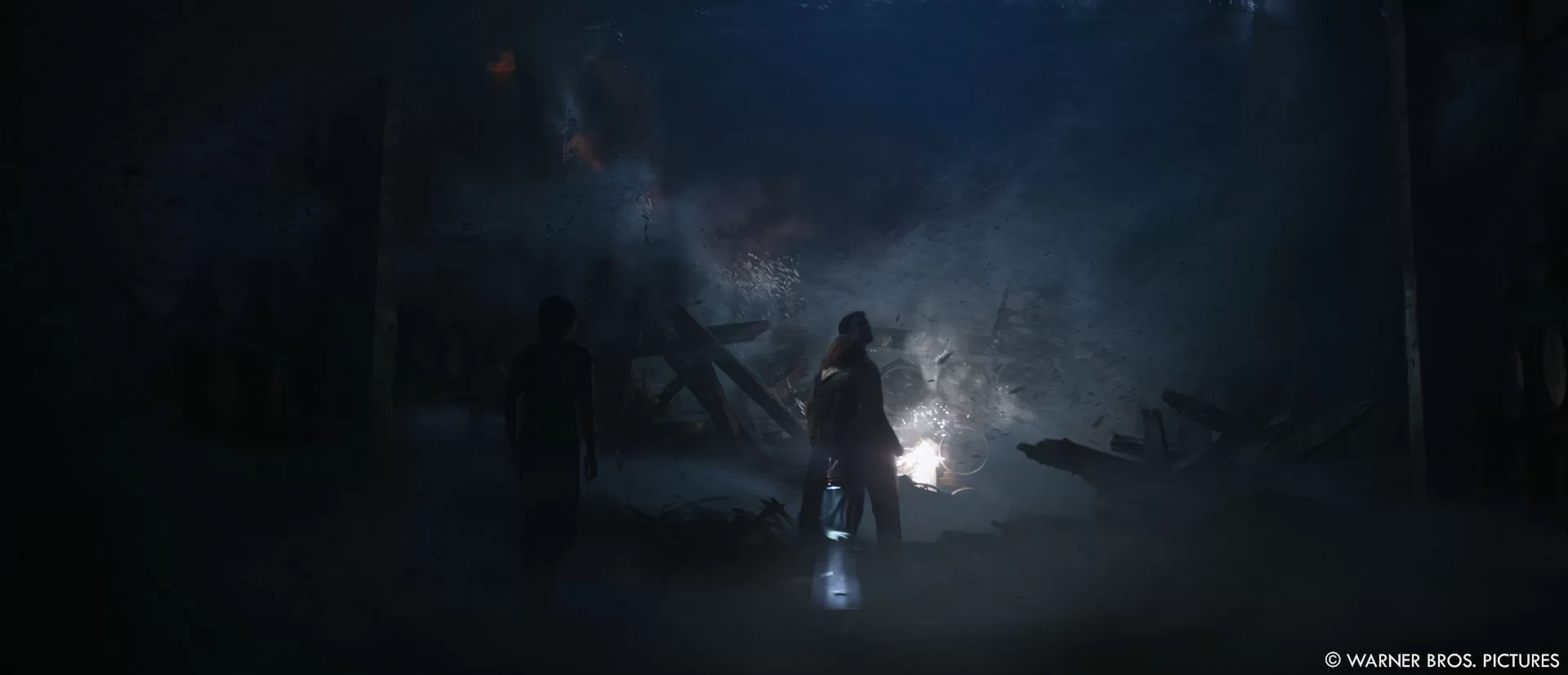
At MPC, you worked on various scenes, including the newspaper kiosk scene featured in all trailers – what were the biggest challenges in this sequence, and how was it created?
Great job guys!
We were also involved in creating 3D environmental elements. Did your knowledge of French architecture facilitate this work?
Having worked on historical films with a focus on French architecture definitely played in our favor. The numerous lidar scans were incredibly helpful too! The set decoration team did a MAGNIFICENT job, giving us a solid foundation to extend/create our 3D sets.
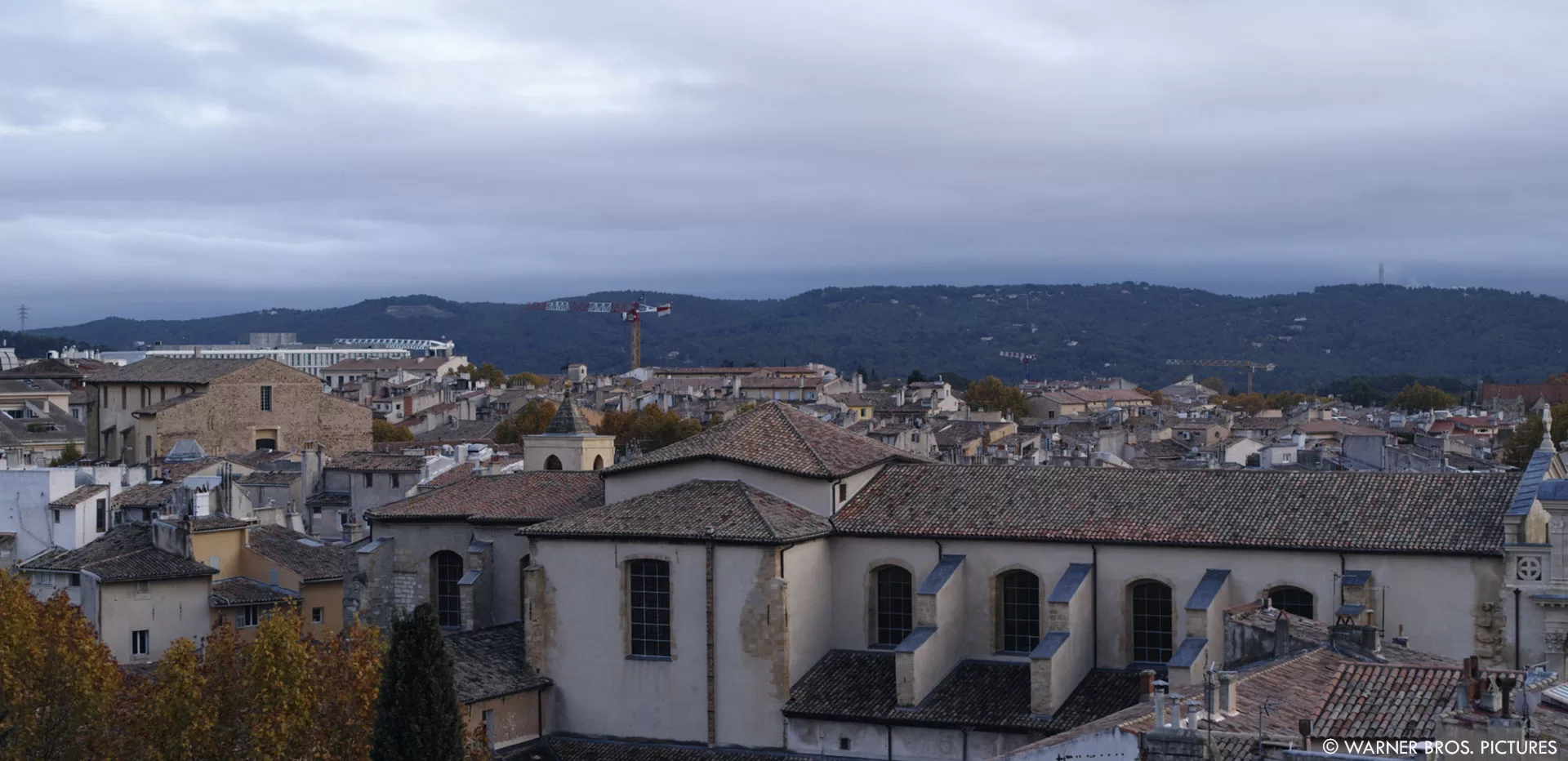
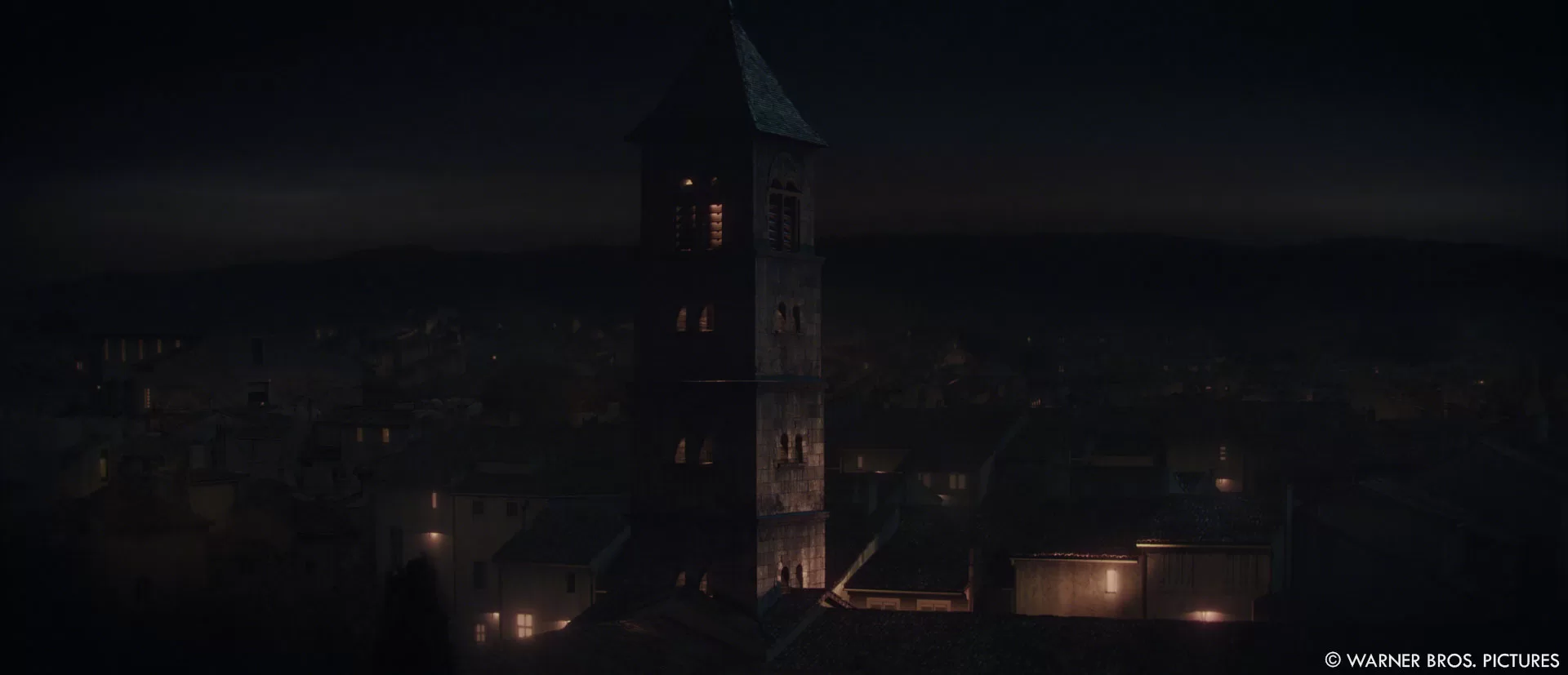
Can you share other visual effects you worked on?
The long sequence on the platform where Sophie and Maurice are in the void, the environment, and the platform are in 3D. The relic lighting up required extensive look development. We created 3D cockroaches, the debris tornado around Maurice and Irene, Irene catching fire. Valak’s face disintegrating, Valak catching fire, the city of Aix-en-Provence at night, and many more.
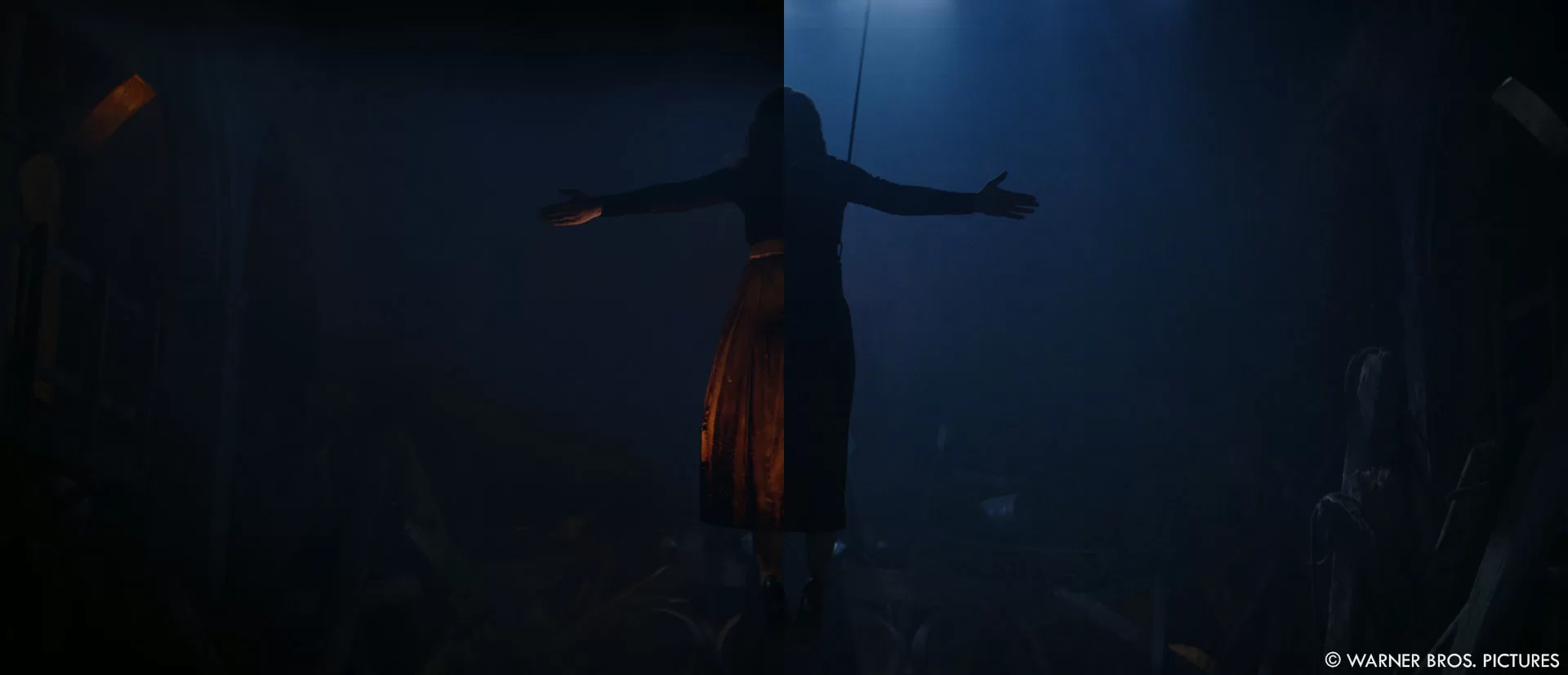
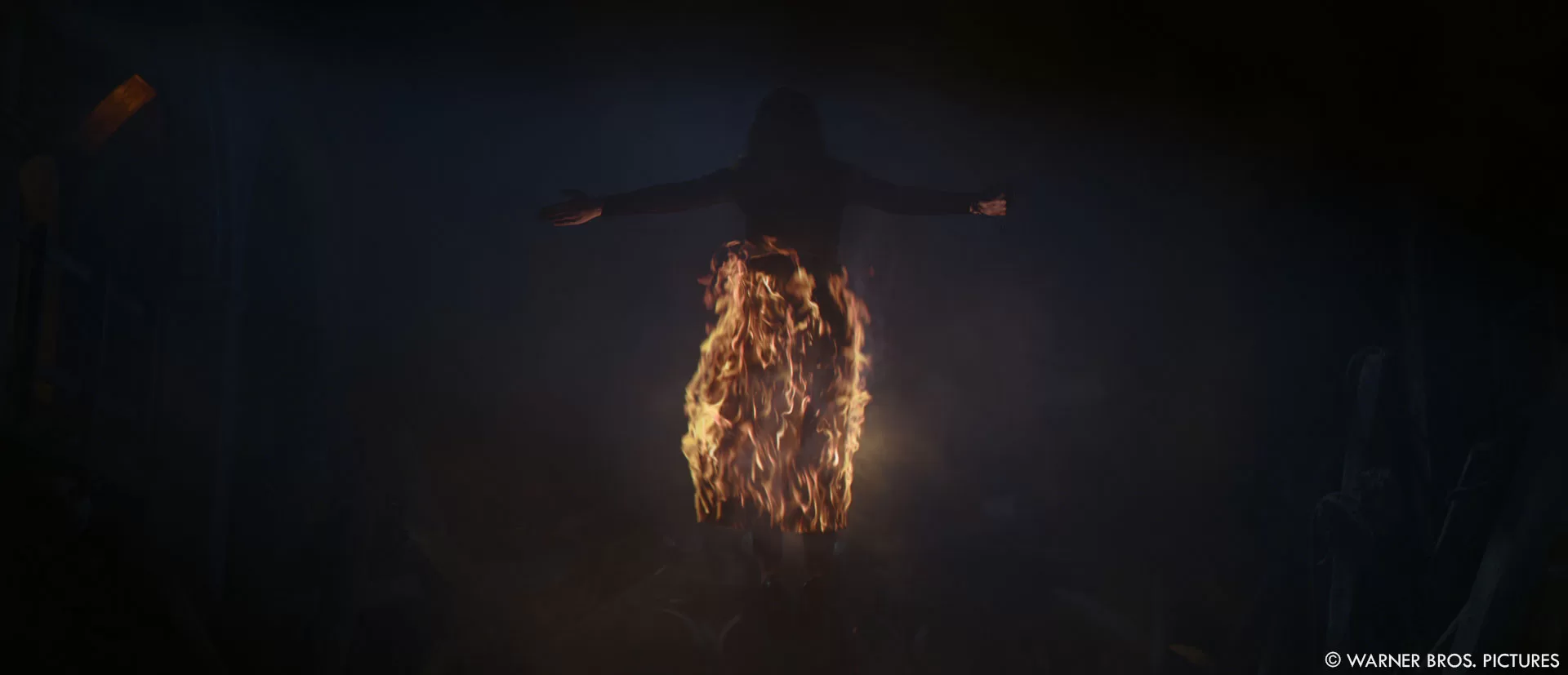
Lucas, as the on-set VFX supervisor, how was your presence crucial to the later stages of visual effects production?
My presence on set was essential as it allowed us to build relationships and trust with the director and the film crews. Day by day, it helped us better interpret the director’s vision and understand his expectations, enabling us to plan certain VFX scenes and optimize the shooting process with other departments. My continuous presence on set also allowed us to take thousands of reference photos, conduct 3D scans of buildings, props, makeup, characters, etc. (photogrammetry, LIDAR), greatly aiding us in reconstructing the various elements needed for VFX design.
Can you tell us about a detail or visual element in The Nun 2 that you added, which might go unnoticed by most viewers but particularly satisfied you as a visual effects professional?
The dust and particules, « la dust » as we called it, present in almost all our shots!
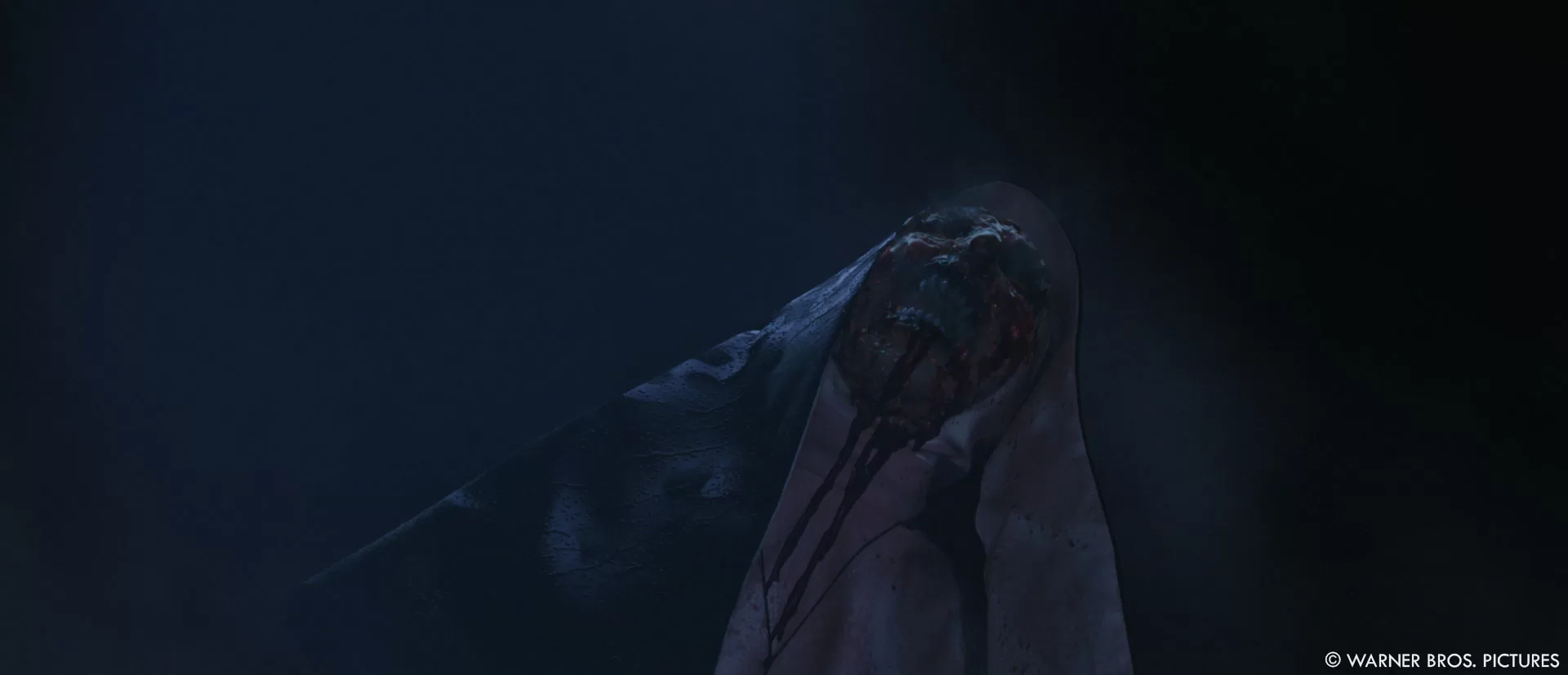
What is your fondest memory from the film’s production?
Lucas: Personally, my fondest memory was all the encounters I had during filming: the stunt performers, Atelier 69 (prosthetics and makeup), the set construction team, the FX team, the costume team… all the incredibly interesting and passionate people contributing to the film’s creation.
Matthieu: This production remains an excellent memory for us overall.
Despite the usual time constraints, our extensive teams accomplished incredible work. The BUF teams in Paris and Montréal are very proud of their work and hope they managed to give you chills!
A big thanks for your time.







